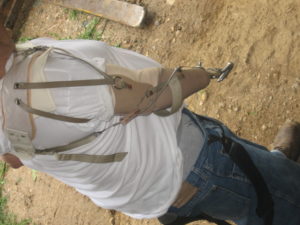

In his article Addressing Safety Challenges for Disabled Workers, safety professional Brandon Emmick explains how ergonomics and accommodations are primary preventative efforts to keep work sites safe for people with disabilities. Appropriate work station heights, lighting arrangements and seating are critical to prevent repetitive motion injuries. In addition, ramps of adequate length and widened doorways allow safe access to buildings and facilities. Assistive technology professionals can evaluate and recommend such accommodations for a worker with disabilities.
Personal protective equipment is also essential to safe worksites. Organizations such as Orr Safety, Inc. supply a broad range of safety equipment to prevent falls, cushion knees, filter air, etc. These items are designed to improve the safety of all workers; however they provide added benefit to those with disabilities or who are returning to work after an injury. For example, anti-vibration gloves serve the preventative purpose

Some personal protective equipment may need to be specially fitted for a person with a disability. Welding helmets are an example. If a welder does not have free movement of his neck muscles, the quick nod required to lower the face shield would be impossible. Auto-darkening helmets can be lowered and left in place without obstructing the vision regardless of the welding arc. An assistive technology professional is specially trained to communicate with and understand the needs of people with disabilities. Consulting with such professionals can help the safety specialist protect the health of workers with disabilities on the job.
In conclusion, Brandon Emmick lays out a great case for the need of careful consideration for workplace safety of people with disabilities. This can be best accomplished by a partnership between a trained safety specialist and an assistive technology professional. The combination of these skill sets will provide workers with appropriate accommodations and specialized personal protective equipment to ensure the safest work place possible.
